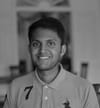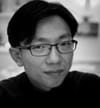- Home
- March 2024
- Spirited: Reminders of How Man and Nature Are Inseparable
Previous Post
Next Post
Low Access to Justice for Vulnerable Victims of Sexual Crimes
4 min read
ACCESS TO JUSTICE is a fundamental human right. It can also be elusive. We often think of the law as inherently neutral or fair, but what one considers a “good...
You might also like
Pursuing the Meaning of Equality and Liberty (With Some AI Assistance)
4 min read
WHETHER WE LIKE to think so or not, modern political thought gained effective sloganic expression during the French Revolution (in 1789), incidentally around th...
A Perfect Hike on Pulau Rimau
5 min read
JUST OFF THE southern tip of Penang Island sits the lush tree-covered isle of Pulau Rimau. Having ticked off all the other large isles around Penang, Pulau Rima...
A Short History of Pulau Rimau
9 min read
WALKING ALONG THE Queen’s Waterfront promenade at Bayan Lepas, you see a large, heavily forested island nearby that once hosted a leper colony and, later, a pri...





